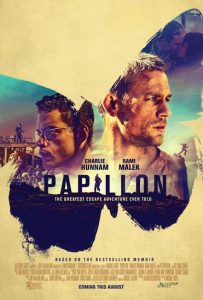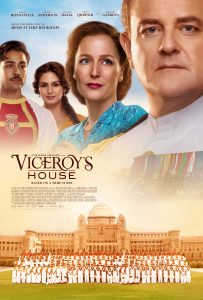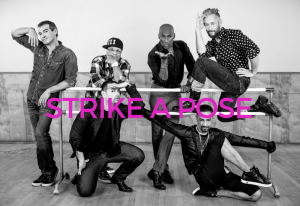



As the 70th anniversary of Holocaust Remembrance Day approached earlier this year, Poland passed some controversial legislation criminalizing any mention of Poles “Being responsible or complicit in the Nazi crimes committed by the Third German Reich.” They stated that the harshest penalties would be reserved for those who referred to Nazi-era concentration camps such as Auschwitz as “Polish death camps.” Many in Israel called this an attempt to whitewash the role that some Poles had in the detention and killing of around three million Polish Jews during World War 2.

Regardless of what you may think about who was complicit or how we refer to the role of Poland specifically, one thing is for certain; the holocaust occurred, it was one of the atrocious cases of mass killing, and we need to do everything we can to make sure such horrors never happen again. This alone makes AFTER AUSCHWITZ critical and compelling viewing. Recently I was invited to a sedar dinner where our host explained that one of the last remaining holocaust survivors at their local synagogue had just passed. As the years move on, so do most of the remaining survivors and our ability to hear directly from them about the atrocities each of them faced for a period of their lives
Jon Kean’s AFTER AUSCHWITZ, is a “Post-Holocaust” documentary that follows six incredible women after their liberation from Nazi concentration camps. It effectively captures what it means to move from tragedy and trauma towards life although we quickly learn that despite these women surviving and going on to build productive lives in the United States, they never truly find a place to call home. Well-constructed with appropriate archival footage and in-depth interviews, the documentary examines the question around what happens after surviving an unspeakable horror.
For survivors of the Holocaust, liberation was both an incredible moment and a devastating one. It marked the beginning of a life-long struggle. Most wanted to go home, but home no longer existed in devastated post-war Europe. Many came to America and wanted to tell people about their experiences but were silenced. “You’re in America now, put it behind you” is what they were told. The women Kean follows became mothers and wives with successful careers, but never fully healed from the scars of the past
Their stories not only show the indelible role immigrants and women played in the history of America during the second half of the 20th century, but also how each of them tried to assimilate, some more successfully than others. In all cases however, what strikes the watcher most about these resilient and inspiring women and what is captured perfectly is this incredible will to survive and a sense of duty they feel to live a full life.
Although AFTER AUSCHWITZ deals with a specific group of survivors, it is universal in the questions it ponders about which relate to moving on after tragedy and adapting to a “normal” life. It’s a story we see repeated by survivors of other genocides – a sad recurring reality that haunts the women in AFTER AUSCHWITZ. Their suffering from post-traumatic stress is also unfortunately universal, as seen in the lives of soldiers coming home from war and even in victims of childhood abuse.
“We normally learn about the Holocaust as if it started with Germany invading Poland, and liberation was the end of it,” says Kean. “Allied soldiers triumphantly told Jews in camps, ‘you’re free, go home.’ But what happened to survivors on the day after liberation? And the day after that? That’s the film I wanted to make. By seeing the world through the eyes of these amazing women, we not only hear unique female voices, we witness stories of resiliency and determination that audiences have never heard before.” Mission accomplished.
This is a rush out and see documentary that is compelling, heart wrenching and inspiring all at the same time.
AFTER AUSCHWITZ opens in Los Angeles on May 4th however for more information about the film, including dates, cities and theaters, visit https://www.AfterAuschwitz.com
Oscillating between suspenseful spy thriller and geopolitical drama set in the middle east, BEIRUT follows a U.S. diplomat (Jon Hamm) who returns to Lebanon after 10 years, working with a CIA operative (Rosamund Pike) to negotiate for the life of a friend he left behind.

Superbly directed by Brad Anderson (The Machinist, “The Wire”) with a tight script written by Tony Gilroy (The Bourne Identity, Michael Clayton), Beirut will have you on the edge of your seat as you watch an effective cat and mouse chase unfold, only the cat and mouse often change places and we never quite know who is pulling the strings or the political agendas at play.
Set against the back drop of war torn Lebanon in 1982, the movie is relevant to the goings-on in the region today. This serves to be both depressing in that not much seems to have changed in the two decades that have passed since but also a reminder of just how complicated the politics of this area of the world remain. The movie effectively holds a mirror to the role that the US often plays in such political treacle using the story of a highly skilled negotiator played expertly by John Hamm who is forced back to the very place he escaped from ten years earlier following tragedy. A hauntingly beautiful score never lets us forget where we are as we see that war often creates situations and people who can be labelled as hero or terrorist yet when viewed through a different lens, those who are treated as criminals are often the very victims of the situation themselves.
The movie is both thrilling and surprising at times as it twists and turns to a thrilling finale with great performances and well rounded characters. Rosamund Pike holds her own against a mostly male cast and reminds us yet again of just how versatile she is. The movie does however expect you to know a little of the history of the region and doesn’t spend a lot of time educating you about it.
Beirut manages to be effectively nostalgic of an era gone by yet current and fresh despite the fact that it is set in the eighties. The movie opens Nationwide on April 11, check local listings for dates and times.
At no other point in history has it been more fitting or important to share a story about the dividing of a nation and its people; extreme and differing political views, nations ravished by arguments over religion and ethnic cleansing often feature front and center in the news – only this story is set in India in 1947.
Welcome to the stunning epic of VICEROY’S HOUSE; the true story of Lord Mountbatten (played by Downton Abbey’s Hugh Bonneville) who is dispatched, along with his wife Edwina (played by Gillian Anderson), to New Delhi to oversee the country’s transition from British rule to independence. Taking his place in the magnificent mansion known as the Viceroy’s House, Mountbatten arrives hopeful for a peaceful transference of power. Yet ending centuries of colonial rule in a country divided by deep religious and cultural differences proves no easy undertaking, setting off a seismic struggle that threatens to tear India apart.

The sumptuous period detail created by the director Gurinder Chadha (Bend It Like Beckham) brings to life a pivotal historical moment that re-shaped the world. Indeed, the ramifications of decisions made seventy years ago have led to two nations (India and Pakistan) in a perpetual state of heightened tension with each other since their inception.
It would have been satisfying enough to watch this bygone event unfold through the lens of the Viceroy and his wife yet Chadha, ever an over-achiever, gives us a stirring love story that layers on top. Equally well acted, we experience the forbidden and complicated love story of Jeet a Hindu boy (played by the hundred Foot Journey’s Manish Dayal) and a Muslim girl, Aalia (played by Huma Qureshi) which perfectly demonstrates the impact that decisions made half a world away had on a people that had endured three centuries of colonization by the British.
An heir of this destiny herself, Chadha who describes herself as someone who “grew up in the shadow of partition” took her time to bring this project to fruition and in doing so uncovered some previously unseen documents, “I always got the impression that Partition was our fault, but the documents we found showed us there was already an agenda in place by the British”.
Chadha does a meticulous job of making this Every man’s partition story and as a result no one in this movie is portrayed as either a villain or a hero. Having been reminded by her own family to ensure that the “Mountbatten plan” was exposed, after doing her thorough research about this story, Chadha soon realized that India’s fate had already been sealed by Winston Churchill and that Mountbatten was merely a pawn led to the slaughter, the result of which would be a divided nation with millions of people getting slaughtered themselves in the process. A tailor-made performance by Bonneville will certainly capture the audience’s empathy yet, when questioned about whether this was the desired outcome, Chadha reiterates her goal was to show just “how ill equipped he was to do such a huge task.”
It would be easy to think of this movie as just a political narrative but to do so would be an injustice. Scattered with strong bold women like Edwina and Aalia who represent the heart and soul of the movie, we experience firsthand not only the exciting sights and sounds of India but also the heartache and trauma that many including the Viceroy himself experienced. That along with an often heart wrenching last performance by the inimitable Om Puri makes this a must-see movie
One will easily be transported to another time and place when watching this movie yet when the credits run you can’t help but wonder whether we learned anything from history, given this was one of the largest movements of people from one place to another in the twentieth century.
THE VICEROY’S HOUSE opens on September 1 and is currently available on VOD – check local listings
